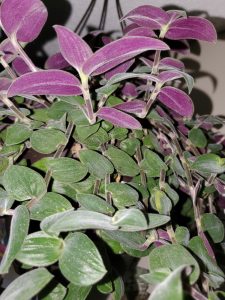If you like to decorate your house with plants, you may want to learn more about the gorgeous fuzzy bunny belly plant. After all, there must be reasons why this houseplant is getting more popular!
Besides being an attractive species, this plant is relatively easy to care for and displays a climbing growth habit that makes it perfect for various locations.
But keep reading this essential guide we put together for you to learn more about this stunning plant!

| Botanical Name | Tradescantia chrisophylla |
| Common Name | Fuzzy Bunny Belly Plant or Baby Bunny Bellies |
| Plant Type | Perennial |
| Flower Color | This plant rarely flowers in cultivation. However, it blooms in nature when it reaches maturity. |
| Size When Mature | In Inches |
| Bloom Time | Not applicable |
| Sun Requirements | Strong indirect sunlight |
| USDA Hardiness Zones | 9-11 |
| Soil PH Range | 6.0 to 7.5 |
| Soil Type | Well-draining and moist |
| Water Needs | Medium |
| Native Area | Brazil |
What you Need to Know About Fuzzy Bunny Belly Plant
The fuzzy bunny belly plant has unique silky foliage that feels like the belly of a baby rabbit (hence the name). To make the most out of it, you will have to provide some support: the plant will grow around it (and the aesthetic effect will be breathtaking!).
But if you have pets, beware: this plant can be toxic when ingested and may cause issues to your dogs and cats. So, keep an eye on your animals if you decide to add the fuzzy bunny belly plant to your interiors to prevent unpleasant surprises!
How to Care for Fuzzy Bunny Belly Plant
We collected everything you need to know about growing and caring for a thriving Fuzzy Bunny Belly Plant here. As we mentioned, taking care of this plant is not too challenging. However, you will have less trouble getting familiar with its requirements.
Light
Lighting is one of the most crucial elements to a fuzzy bunny belly’s thriving. Indeed, these plants will have trouble growing without receiving sufficient lighting. Place your plant’s container about 3 feet from a south-facing window. Consider getting shears to minimize sunburn damage.
Also, don’t forget to rotate your plant regularly to ensure an even growth pattern. But avoid exposing your fuzzy bunny belly plant to direct sunlight: it may damage its delicate leaves.
Water and Soil Needs
Pay attention to watering: while these houseplants do well in moist soil conditions, you must allow the substrate to dry before adding extra moisture. Doing so will minimize the risk of root rotting and fungal diseases.
One of the best things about baby bunny bellies plants is that they can grow in most soil conditions. So, you don’t have to spend too much time selecting a proper potting mix for your plants. The ideal pH is between 6.0 and 7.5.
Temperature Requirements
Tradescantia is a tropical native houseplant that performs better at temperatures between 65 and 75°F. While it might adapt to warmer conditions, it will struggle in the cold. So, avoid placing it next to a window where you know it can receive drafts during the day.
If you prefer growing this plant outdoors, beware that you can only do so if you live in USDA hardiness zones between 9 and 11. And even then, you might have some issues having your plant adapt to the outdoor environment. After all, its foliage will suffer under direct sunlight exposure.
Luckily, baby bunny bellies don’t need additional humidity. So, you won’t have to spend your money on humidifiers or pebble trays. Plus, there is no need for misting, which may come in handy if you don’t have much free time to dedicate to your plants.
Fertilizer
Rich soil is the ideal medium for growing a thriving baby bunny belly plant. Also, don’t forget to transplant your green friend to a larger container as it outgrows the “old” pot. Since you may need to do so every couple of years (as the plant doubles its size in that time), you rarely will have to add extra nutrition. However, you must use a high-quality substrate to ensure your plants get all they need from the soil!
Common Diseases
We have good news: baby bunny belly plants rarely suffer from diseases. However, they are susceptible to root rot. For this reason, you must pay attention to your watering schedule and avoid giving too much moisture to your plant. As long as you give your plant all it needs to thrive, you won’t encounter too many issues with it.
Still, keep an eye for pests: if you notice some bugs on your plant, take prompt action to remove them. Doing so will prevent infestations and plenty of headaches.
